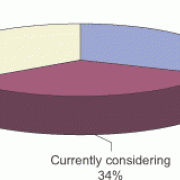SURVEY DEMOGRAPHICSIn September/October 2005, Cutter Consortium conducted a survey of 118 enterprise IT professionals. The participants represent nearly every major industrial sector, government entity, and nonprofit institution, including universities and medical/healthcare service providers. One-quarter of the respondents have senior management/policy-making responsibilities, and another 23% are in IS/IT management. Almost half (48%) of the respondents work in organizations based in North America. One-fifth (20%) work for organizations located in Europe, another fifth (20%) are located in Asia, and the remainder are spread across the rest of the world. Approximately one-third (35%) of the respondents work in organizations with 50 or fewer employees. Almost as many (32%) work in organizations with between 50 and 1,000 employees. The remaining 33% work in organizations with more than 1,000 employees. |
One of the most significant trends in the IT industry is the transformation of the software business model from packaged products to subscription services. This movement is being fueled by a combination of customer frustration with traditional software applications and the emergence of new Web-based software development mechanisms that make it possible to deliver robust software functionality via the Internet.
The trend is not only changing the way many organizations leverage software applications, it is also fundamentally disrupting the way the software industry is structured.
A recent Cutter Consortium survey found that enterprises are moving quickly to take advantage of software-as-a-service (SaaS). This is the first in a series of Executive Updates that examines this issue. Overall, those that have already acquired SaaS solutions are satisfied with the results and plan to expand the range of applications they acquire via this new model.
Here in Part I, we provide a quick history of the evolution of SaaS and, based on Cutter's recent survey findings, examine how enterprises are leveraging this important new software innovation to meet their business objectives.
BACKGROUND
The concept of SaaS is not new. It emerged during the dot-com era in two forms: application hosting and ASPs.
Application hosting generally involved third parties housing licensed software applications on behalf of enterprise customers on a set of remote, centralized servers. These "server farms" promised to save the enterprise customer hardware, electrical, and real estate costs, while also promising greater application reliability and performance levels because the hosting company would dedicate greater staff skills and resources to system maintenance and software updates/upgrades.
ASPs, such as Corio and USinternetworking, took the hosting model one step further by modifying the original software application to address specific market segment requirements. For instance, many of the ASPs targeted small-to-medium-sized businesses (SMBs) or specialized in vertical market applications.
Unfortunately for the ASP and hosting industry pioneers, mainstream enterprise customers were not ready to entertain their new software solutions. As a result, many of the first generation of ASPs and hosting companies disappeared with the dot-com bust.
However, the costly challenges associated with implementing and maintaining enterprise applications didn't go away, and in many cases, they escalated. This permitted a new generation of ASPs and hosting companies to enter the market from the embers of the original subscription service model value proposition with a new set of Web-enabled software solutions that were easier to acquire and administer than the original offerings. The most prominent of these new SaaS providers were Salesforce.com and NetSuite.
With their astronomical customer growth, financial success, and recent series of strong IPOs, the SaaS leaders have attracted a rapidly expanding array of imitators attacking every segment of the enterprise software market. These include companies such as RightNow in customer relationship management (CRM), SuccessFactors in human resource management (HRM), and Taleo in talent management.
The rapid rise of independent SaaS providers has also fundamentally changed the competitive landscape among the established independent software vendors (ISVs). The emergence of Salesforce.com as a major player in the salesforce automation (SFA) and CRM software market drove Siebel to partner with IBM to deliver a new on-demand alternative to its traditional packaged software applications and, ultimately, to be acquired by Oracle, which has been building its own hosted services business. SAP has also been expanding its hosted service capabilities to respond to the competitive threat of SaaS alternatives.
Even Microsoft has accelerated the development and scheduled release in 2006 of its new Web-based software services to keep pace with the rapid growth of the SaaS market.
CUSTOMER ADOPTION OF SaaS GROWING FAST
Almost one-third of our survey respondents are already using SaaS, and another third are currently considering it (see Figure 1).
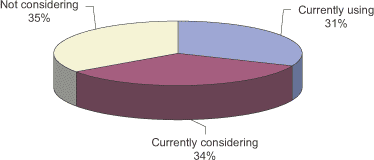 Figure 1 -- Are you currently using or considering using software-as-a-service (SaaS)? |
Of the respondents that are already using SaaS, 70% have been doing so for more than one year, and 92% of current SaaS users are satisfied with this application delivery model. As a result of this high satisfaction rate, 87% of current SaaS users expect to acquire additional SaaS offerings, and 92% would recommend SaaS solutions to other enterprises.
Of those enterprises that are currently considering SaaS, 82% expect to adopt this software alternative within the next 12 months (see Figure 2).
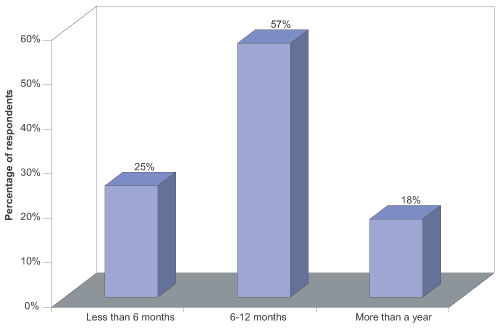 Figure 2 -- Within what time frame do you expect to adopt SaaS? |
This means that over 50% of survey respondents will be utilizing SaaS solutions within the coming year -- a clear indication of the rapid adoption of this relatively new software alternative.
WHAT TYPES OF SaaS APPLICATIONS ARE CUSTOMERS ACQUIRING?
With the success of RightNow, Salesforce.com, and others in the CRM and SFA application sectors, it shouldn't be a surprise that these are the most likely types of applications to be acquired via SaaS providers. However, Cutter's survey found that a substantial proportion of customers are currently using or considering SaaS alternatives for traditional enterprise resource planning (ERP), HRM, supply chain management (SCM), and other application packages (see Figure 3).
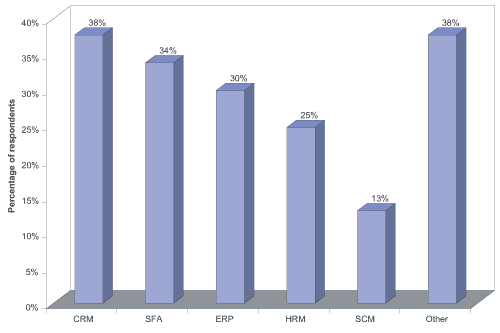 Figure 3 -- What types of SaaS are you using or considering using? (Please select all that apply.) |
WHAT'S DRIVING CUSTOMER DEMAND FOR SaaS?
SaaS is gaining attention and winning customer adoption because of its attractive combination of accelerated deployment capabilities and potential cost savings.
As Figure 4 illustrates, 86% of survey respondents admit that they are leveraging or plan to take advantage of SaaS because of the potential cost savings from this software delivery model.
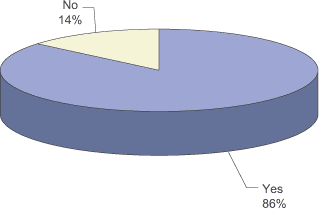 Figure 4 -- Are you leveraging or do you expect to leverage SaaS to generate cost savings? |
In fact, approximately 85% of the respondents expect to generate up to 30% cost savings by leveraging SaaS. In addition to the cost-savings potential of SaaS, the ability to accelerate the software deployment process and the opportunity to have inhouse IT/application development staff focus on more strategic projects are the next most important reasons for organizations to migrate to a SaaS model.
GREATEST SaaS BENEFITS
According to those in our survey who are currently using SaaS, it is meeting their expectations by generating a greater ROI than traditional software packages while lowering staff support requirements and improving application reliability and performance (see Figure 5).
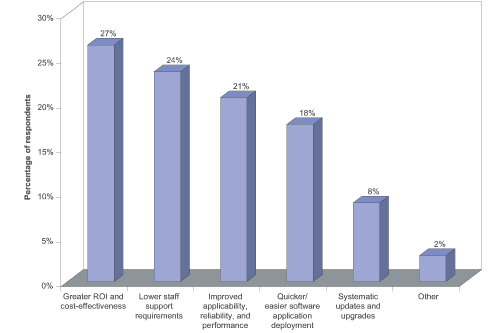 Figure 5 -- What is the greatest benefit of the SaaS offering? |
WHAT DO THE RESULTS MEAN?
The IT industry is notorious for promoting new technologies with limited real-world value in search of a market. At the same time, there have been many worthwhile innovations that have failed to win widespread industry acceptance because they couldn't be easily adopted.
SaaS isn't just another IT fad that will fade away because it doesn't fulfill its promise. Instead, there are a growing number of enterprises of all sizes that are generating measurable cost savings and performance improvements as a result of adopting SaaS.
This track record of success is accelerating the rate of adoption and expanding the range of applications that are being converted to the SaaS delivery model. It is also dramatically changing the competitive landscape of viable SaaS providers. Relative startups, such as Salesforce.com, RightNow, and others, are now viewed by customers as equal or even superior to the far more established and historically more powerful major ISVs, system vendors, and outsourcers.
These trends should compel every enterprise to reevaluate their software sourcing, deployment, and management strategies. As SaaS alternatives become more pervasive, and their operational reliability and cost-effectiveness become more obvious, IT decision makers that do not pursue these options will be doing their enterprises a serious disservice.
In upcoming Updates, we will examine the key criteria that the survey respondents have used to select their SaaS providers and the types of providers they most often select. We will also look at the long-term strategic sourcing implications of the movement toward SaaS.


